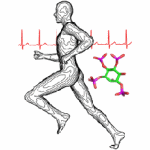Physiology
|
12 july 2011 15:25:47 |
| Regulation of Caenorhabditis elegans vitellogenesis by DAF-2/IIS through separable transcriptional and posttranscriptional mechanisms (BMC Physiology) |
|
Tweet Background:
Evolutionary theories of aging propose that longevity evolves as a competition between reproduction and somatic maintenance for a finite pool of resources. Reproduction is thought to shorten lifespan by depleting resources from processes promoting somatic maintenance. Maternal yolk production, vitellogenesis, represents a significant maternal cost for reproduction and is suppressed under genetic and environmental conditions that extend lifespan. However, little is known about the pathways regulating vitellogenesis in response to prolongevity cues.
Results:
In order to identify mechanisms that suppress vitellogenesis under prolongevity conditions, we studied factors regulating vitellogenesis in C. elegans nematodes. In C. elegans, vitellogenesis is depressed in the absence of insulin-like signaling (IIS). We found that the C. elegans daf-2/IIS pathway regulates vitellogenesis through two mechanisms. vit-2 transcript levels in daf-2 mutants were indirectly regulated through a germline-dependent signal, and could be rescued by introduction of daf-2(+) sperm. However, yolk protein (YP) levels in daf-2 mutants were also regulated by germline-independent posttranscriptional mechanisms.
Conclusions:
C. elegans vitellogenesis is regulated transcriptionally and posttranscriptionally in response to environmental and reproductive cues. The daf-2 pathway suppressed vitellogenesis through transcriptional mechanisms reflecting reproductive phenotypes, as well as distinct posttranscriptional mechanisms. This study reveals that pleiotropic effects of IIS pathway mutations can converge on a common downstream target, vitellogenesis, as a mechanism to modulate longevity. |
| 141 viewsCategory: Physiology |
 The actions of exogenous leucine on mTOR signalling and amino acid transporters in human myotubes (BMC Physiology) The actions of exogenous leucine on mTOR signalling and amino acid transporters in human myotubes (BMC Physiology)Receptors and effects of gut hormones in three osteoblastic cell lines (BMC Physiology) 
|
| blog comments powered by Disqus |
MyJournals.org
The latest issues of all your favorite science journals on one page
The latest issues of all your favorite science journals on one page



